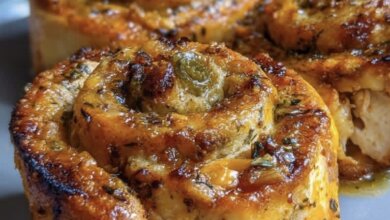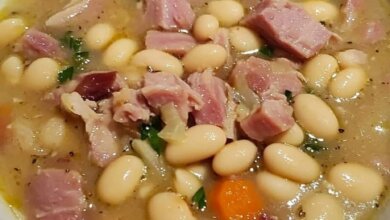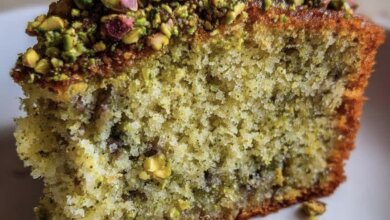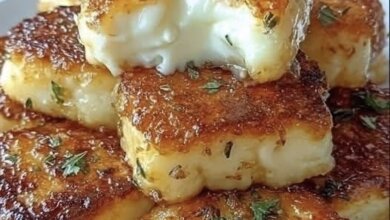Classic Scone Recipe
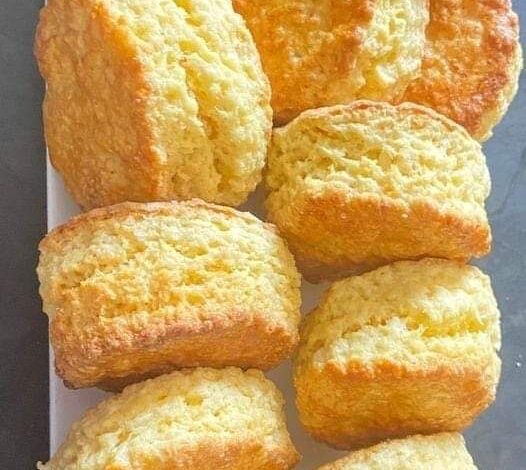
Introduction
Scones are a quintessential part of British tea culture, often enjoyed with a dollop of clotted cream and jam. Their light, crumbly texture and slightly sweet flavor make them an irresistible treat for breakfast, brunch, or afternoon tea. Whether you’re serving them fresh from the oven or saving them for later, this classic scone recipe is sure to become a favorite. With a few simple ingredients and techniques, you can whip up a batch of perfect scones every time.
History of Scones
Scones have a rich history that dates back to Scotland in the early 1500s. Originally made from oats and cooked on griddles, scones were simple, flat, and unleavened. It wasn’t until the 19th century that scones, as we know them today, became popularized in England as part of afternoon tea. Anna, the Duchess of Bedford, is often credited with making the combination of scones, clotted cream, and jam a quintessential part of British tea culture.
Benefits of Eating Scones
Scones can be a delightful part of a balanced diet when consumed in moderation. Here are some benefits associated with eating scones:
- Energy Boost: The carbohydrates in scones provide a quick source of energy, perfect for breakfast or a midday snack.
- Rich in Butter and Milk: These ingredients provide essential fats, which help absorb fat-soluble vitamins like A, D, E, and K.
- Customizable Nutrition: Adding ingredients like dried fruit, nuts, or seeds can boost the fiber, vitamins, and minerals in your scones.
Ingredients
- 2 cups (250g) all-purpose flour – Plus extra for dusting.
- 1/4 cup (50g) granulated sugar – For a touch of sweetness.
- 1 tablespoon baking powder – For that essential rise.
- 1/2 teaspoon salt.
- 1/2 cup (115g) unsalted butter – Cold and cubed.
- 2/3 cup (160ml) whole milk – Or heavy cream for richer scones.
- 1 large egg – For the egg wash.
- 1 teaspoon vanilla extract (optional) – For flavor.
- Optional add-ins: 1/2 cup of dried fruit (like currants, raisins, or cranberries), chocolate chips, or citrus zest.
Instructions
- Preheat the Oven
- Preheat your oven to 400°F (200°C).
- Line a baking sheet with parchment paper.
- Mix the Dry Ingredients
- In a large mixing bowl, whisk together the flour, sugar, baking powder, and salt until well combined.
- Cut in the Butter
- Add the cold, cubed butter to the flour mixture.
- Using a pastry cutter, two knives, or your fingers, work the butter into the dry ingredients until the mixture resembles coarse crumbs.
- Add the Liquid Ingredients
- In a small bowl, whisk together the milk and vanilla extract (if using).
- Make a well in the center of the dry mixture and pour in the milk mixture.
- Stir gently with a fork or a spatula until the dough begins to come together. Avoid overmixing; the dough should be slightly sticky but still crumbly.
- Fold in any desired add-ins.
- Shape the Dough
- Turn the dough out onto a lightly floured surface.
- Gently pat the dough into a round shape, about 3/4-inch (2 cm) thick.
- Using a floured round cutter (about 2 inches in diameter), cut out scones by pressing straight down.
- Prepare for Baking
- Place the scones on the prepared baking sheet, spacing them about 2 inches apart.
- In a small bowl, whisk the egg with a tablespoon of milk to create an egg wash.
- Brush the tops of the scones with the egg wash.
- Bake the Scones
- Bake the scones in the preheated oven for 12-15 minutes, or until they are golden brown and risen.
- Remove from the oven and allow them to cool slightly on a wire rack.
- Serve
- Serve warm with clotted cream, butter, and your favorite jam.
Methods and Techniques
- Using Cold Butter: Ensures a flaky texture by creating steam pockets as the butter melts during baking.
- Proper Mixing: Mix just until the dough comes together to avoid tough scones.
- Shaping and Cutting: Use a straight-down motion to cut the scones without twisting the cutter, which helps them rise better.
Nutritional Information (Per Scone, Approximate)
- Calories: 220
- Fat: 11g
- Saturated Fat: 7g
- Cholesterol: 40mg
- Sodium: 200mg
- Carbohydrates: 27g
- Fiber: 1g
- Sugars: 6g
- Protein: 4g
Popular Scone Lovers
Scones are adored by many around the world, especially in the UK, Australia, New Zealand, and other Commonwealth countries. They are a favorite among tea enthusiasts, who enjoy them during afternoon tea. Many cafes and bakeries in these regions also offer a variety of scones, from traditional plain scones to more adventurous flavors like pumpkin spice or chocolate chip.
Formation
The dough formation is key to creating the perfect scone. Keeping the butter cold, handling the dough gently, and using a light touch when shaping it ensures a tender and flaky result. The classic round shape is achieved with a cutter, but triangular scones can also be made by shaping the dough into a disk and cutting it into wedges.
Conclusion
Scones are more than just a delicious pastry; they carry a piece of history and tradition with them. Their simple preparation allows for endless variations, making them a versatile treat that can suit any occasion. With their rich, buttery flavor and soft texture, scones remain a beloved comfort food for many.
Final Thoughts
Baking scones at home can bring a taste of tradition to your kitchen. Whether you prefer them plain or with added flavors, scones are a delightful way to enjoy a cozy tea-time ritual. Serve them warm, and you’ll see why scone lovers keep coming back for more. Happy baking!
